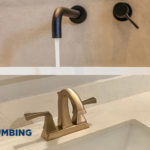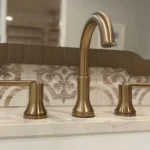This post may contain affiliate links. If you use these links to buy something we may earn a small commission. Thanks.
Deciding on a new bathroom or kitchen faucet is a huge pain. You used to just drive over to Home Depot or Lowes with your wife and buy the faucet she liked the look of.
Now you’ve gotta spend tons of time researching all the different factors that going into faucets. There are different faucet brands, faucet finishes, faucet spreads, hole sizes, mounting types, etc.
Today I’m breaking down what a wall mount faucet is, the pros and cons of using one, and some unique insights we’ve picked up along the way.
Our Mission
I’ve done a ton of work to research, compare, review the faucet industry. I’ve reached out to experts in every field: plumbers, interior designers, home builders, realtors, and architects. I’m sharing everything I learn along the way.
My goal is to make it as easy as possible for you to find a buy the perfect faucet for your home.
- What is a Wall Mount Faucet?
- Pros and Cons of a Wall Mount Faucet
- What Should the Faucet Height be for a Wall Mount Faucet?
- What Kind of Sinks Should you have for a Wall Mount Faucet?
- Installation Tips for a Wall Mount Faucet
- Common Questions About Wall Mount Faucets
- Final Verdict: Is a Wall Mount Faucet Right for you?
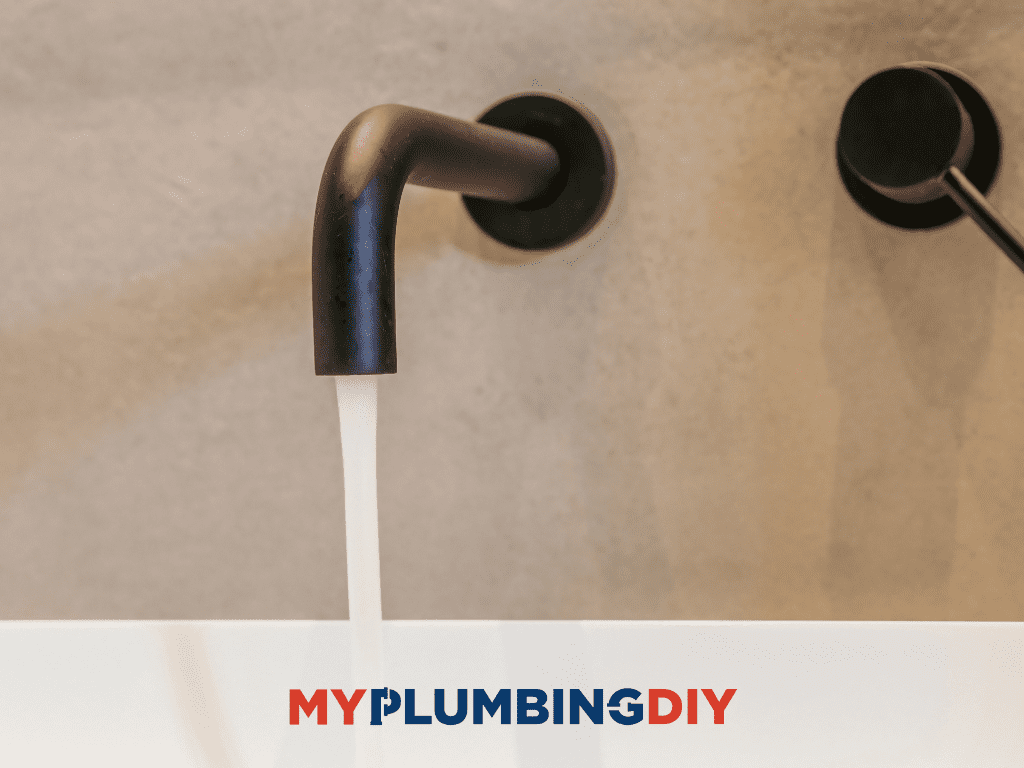
What is a Wall Mount Faucet?
A wall mount faucet is mounted on the wall with the faucet spout aimed down into the sink with handles on either side. The faucet holes are drilled into the wall or backsplash with the plumbing supply lines running behind the wall instead of under the countertop.

Wall mount faucets are a great choice for higher end bathrooms or smaller bathrooms trying to free up more counterspace. They pair best with vessel sinks or undermount sinks because of the way the faucet must be installed.
Wall mounted faucets are growing in popularity because of the push over the last ten years towards a more modern and minimalist design aesthetic.
These faucets are extremely popular for bathtub faucets, but are becoming more and more common in bathroom sink and kitchen faucets.
Heads-up!
One thing you need to know is that you can’t replace a deck mount faucet with a wall mounted faucet. Deck mounted faucets are installed on the countertop directly into the sink by drilling 1-3 holes. If you are replacing a deck mounted faucet, you must buy another deck mount — you’re wanting to replace the sink/counter.
Pros and Cons of a Wall Mount Faucet
Wall mounts are definitely trending these days in the interior design world. My wife and I don’t personally own one, but our best friends do! We went over to their house last week, tested their faucet, and asked for their opinions to see what they think.
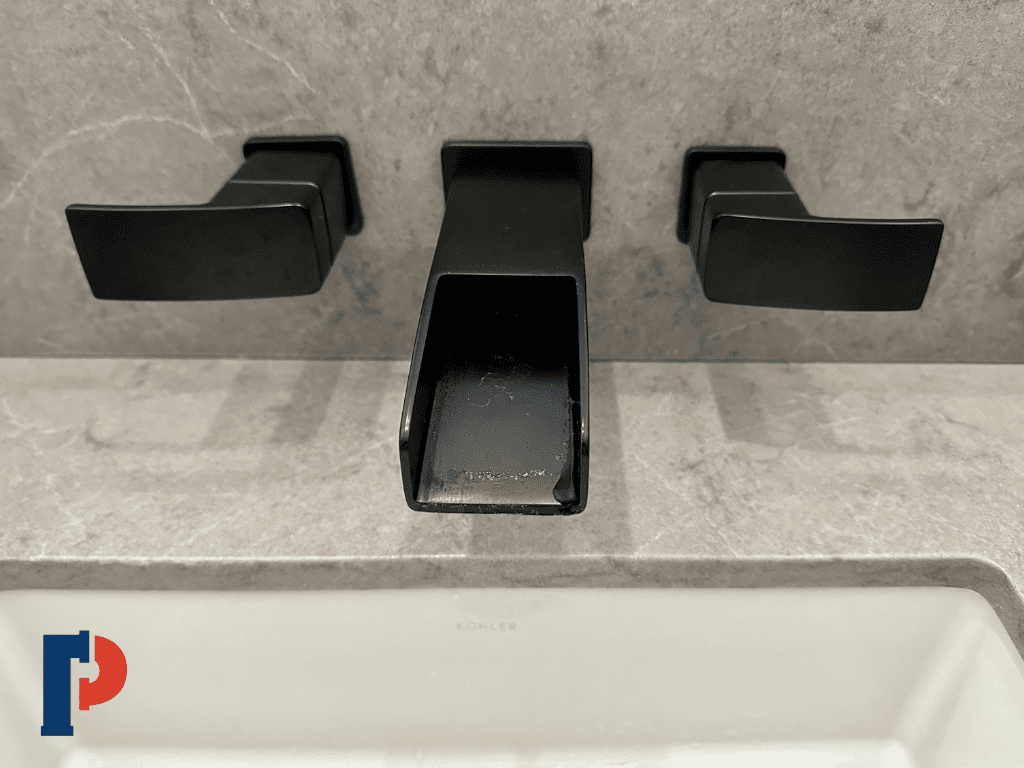
Here are the pros and cons of a wall mount faucet.
Pros
Unique
The majority of bathroom faucets are deck mount faucets, which makes wall mounted faucets much more unique! They add a showstopping touch to your bathroom that is sure to impress your guests and set your house apart.
Cleaner
One of the biggest pros of a wall mounted faucets is that they are much cleaner! Deck mounted faucets are much more likely to get hard water spots, toothpaste stains, and generally get much dirtier. They have to be cleaned much more often. The wall mount faucets sit above the faucet so they require much less cleaning!
Aesthetic
Even though my wife and I don’t own a wall mount faucet, I love the look of them. They have a modern-minimalist design that I think is definitely becoming more and more popular.
More room on countertop
The best part of a wall mounted faucet is that you gain more room on your countertop or sink. The space where your deck mount faucet would have been can now be used to store your soap, toothbrush, etc.
Wall mounted faucets can be great for smaller bathrooms where you need to maximize your functional space.
Widely available
Wall mounted faucets have become much more popular in recent years. Faucet brands have begun investing more in creating new product lines in this category. All of the best faucet brands make great looking wall mounted faucet so you should have plenty of variety to pick from.
Most wall mount faucets have the same faucet spread as widespread faucets, but they’re just positioned on the wall instead of the counter/sink.
Cons:
Splashing
One of the most common frustrations for owners of wall mount faucets is splashing. If you don’t position the faucet properly where the flow of water lands in the sink at the right angle AND from the right height, then water will hit the sink and splash out.
Unfortunately, you usually don’t realize this is a problem until it’s too late and your faucet/sink are already installed. The key is to make sure your faucet is positioned correctly & having the right kind of sink.
We’ll hit on this more below.
Harder to install
Wall mounted faucets are significantly harder to install. Any decent home DIY-er can install a deck mounted faucet if they have the right tools. Installing a wall mount faucet is tricky because you have to run the supply lines down the back of the wall behind the sheet rock.
Then you have to open up the wall to make sure those supply lines are coming back out to connect into your plumbing pipes.
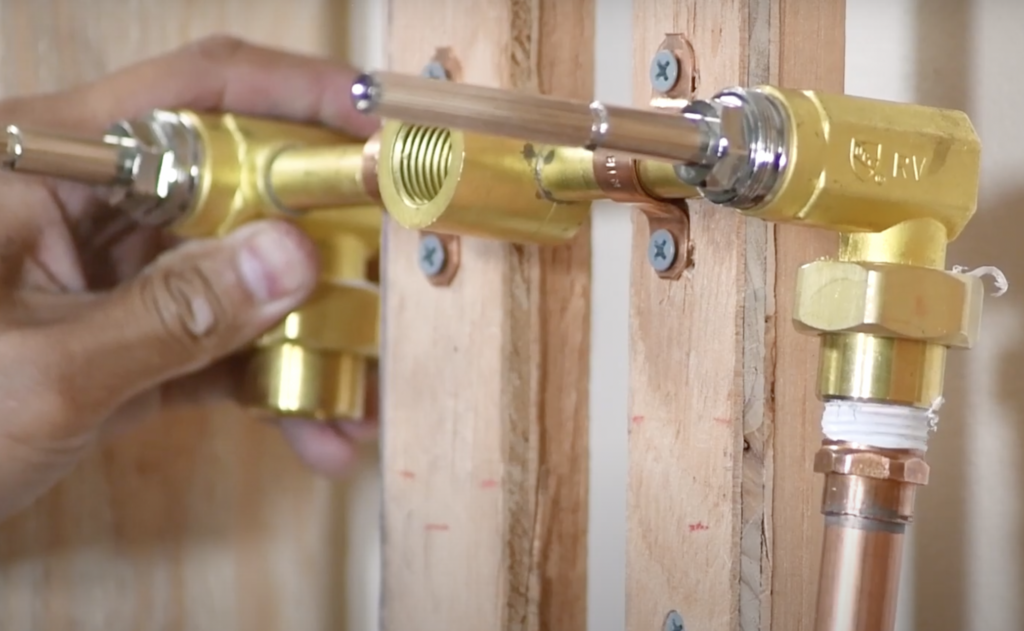
Cost
The installation issues we just talked about drive up the cost. We definitely do NOT recommend installing a wall mount faucet yourself. As much as we love a good DIY project, installing a wall mount faucet on your own is not advised.
The faucet themselves cost about 30-50% more. That plus the added installation cost of hiring it out = more money being spent.
Hard to access for repairs
All of these “cons” are connected. Installing the faucet into the wall and running the supply lines through the wall means that you can’t open up your cabinets under the sink to troubleshoot. If you have an issue with water leaking, you’ll have to pay a plumber to come in and open up the wall to access the issue.
The real challenge though is that you could have a leak in your faucet and be totally clueless. If the lines are behind the wall you’ll never see the leak until it’s already done a lot of damage.
What Should the Faucet Height be for a Wall Mount Faucet?
Wall mounted faucets should be installed so that the faucet is positioned 3-6 inches above the top of the sink. The stream of water from the faucet should land as close as possible to the bottom of the drain. We recommend having the water land just shy of the sink drain on the side closer to the wall. This will help the water land in your sink and flow “downhill.”
If the faucet lands on the far side it will hit and splash up towards the edge of the counter. This is the main reason that wall mounted faucets will splash.
A deeper sink can also help prevent splashing because the water will have more room to disperse without getting out of the sink.
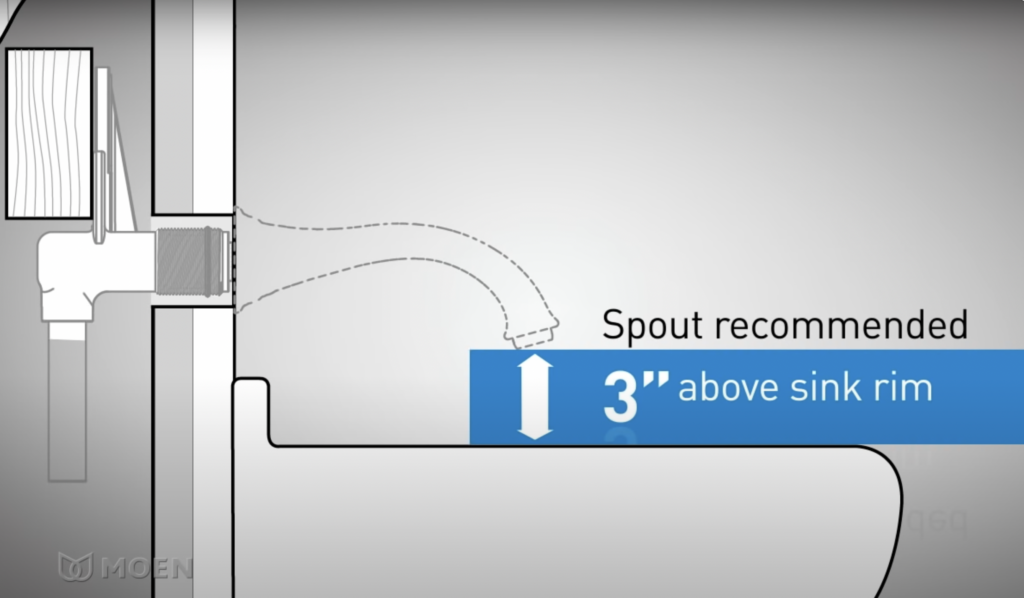
What Kind of Sinks Should You Have for a Wall Mounted Faucet?
Wall mounted faucets will work best if you have the right kind of sink. This will help you make sure you can have a faucet that is aesthetic and functional.
Finding a sink that has less of a curve will help make sure you don’t have water splashing outside of your sink. A square sink can also help with this.
Vessel sink – Vessel sinks are typically wide and shallow and sit on top of your counter. These are great for catching water, reducing the risk of splashing water, and visually they pair well with wall mounted faucets.
Undermount sink – Undermount sinks help create more space between the faucet and the sink itself. These are great for having room to wash your hands, brush your teeth, or do anything else that’s needed. These sinks will be flush with your countertop.
Installation Tips for Wall Mounted Faucets
Installing a wall mounted faucet is tricky, but I wanted to include some tips to help!
- Plan ahead – You need to plan ahead when you decide to go with a wall mounted faucet. It’s best to have the sink, faucet, and vanity all picked out ahead of time. This will help you to make sure you have the plumbing holes and rough-ins all mapped out ahead of time.
- Measure twice – Use our advice above to make sure you install your faucet the right way. This will ensure that you don’t end up with splashing water or a faucet that doesn’t line up with your sink. Measure twice before you drill.
- Insulate pipes if on an exterior – If you install your wall mounted faucet on a wall that faces the exterior of your house then you need to make sure you insulate your pipes. Any plumbing features on an exterior wall are at a higher risk of freezing when you have cold weather. You can get a special spray foam to insulate around your pipes so they don’t freeze.
- Hire a plumber – Wall mounted faucets are harder to install and are a real pain to fix if you don’t install them right. As much as we love helping people learn how to DIY their plumbing issues, we do not recommend installing a wall mounted faucet on your own.
Can I replace a deck-mounted faucet with a wall-mounted one?
Deck mounted faucets cannot be replaced with a wall mounted faucet unless you want to replace your whole countertop or sink. Deck mounted faucets are installed by drilling holes into the top of the sink or on your counter just behind the sink.
If you replace the deck mount with a wall mount then you’ll have open holes where it used to be.
If you’re redesigning your entire vanity, then you can definitely make the switch!
We’ve done a big comparison of wall mount vs deck mount faucets that’s definitely worth reading.
Common Questions About Wall Mount Faucets
Wall mounted faucets are more expensive because they are much harder to install.
Wall mounted faucets shouldn’t leak as long as they were properly installed! They are just as leak-proof as any other faucet on the market.
Wall mounted faucets are much more difficult to fix because the supply lines run behind the wall. Any fixes or needed repairs will require opening up the wall and potentially re-drywalling or tiling.
A wall mounted faucet should be 6-8 inches above the sink. If you do it too high then it will increase the chances of water splashing outside of the sink and if you do it too close you won’t have room to wash your hands.
Wall mount faucets are the most popular choice for bathtubs who have an end touching a wall! They are less popular for garden tubs, but the most common for shower-bath combos.
Wall mounted faucets should extend over the sink so that the stream of water lands right at the base of the sink near the drain. This distance will vary depending on your faucet.
Final Verdict: Is a Wall Mount Faucet Right for you?
Wall mounted faucets are a fantastic purchase if you can afford them and if you’re comfortable with some of the cons that come with them. They are unique and are a definitely a higher-end touch to your bathroom.
If you have a smaller bathroom and want to maximize your usable space then I definitely recommend getting a wall mount faucet.
